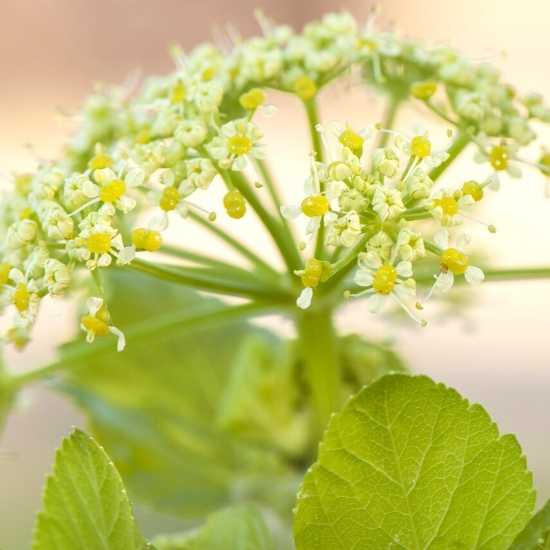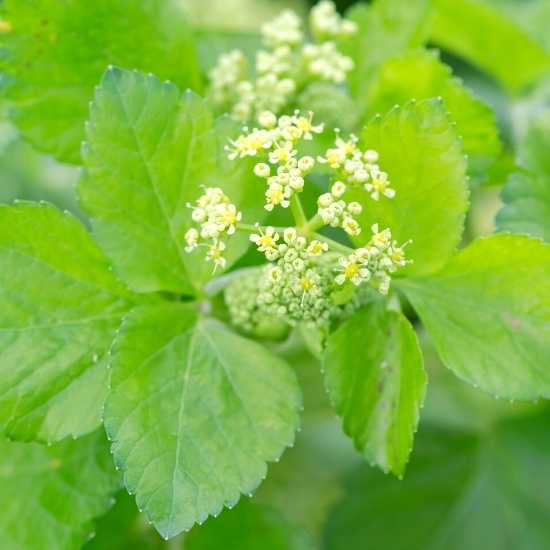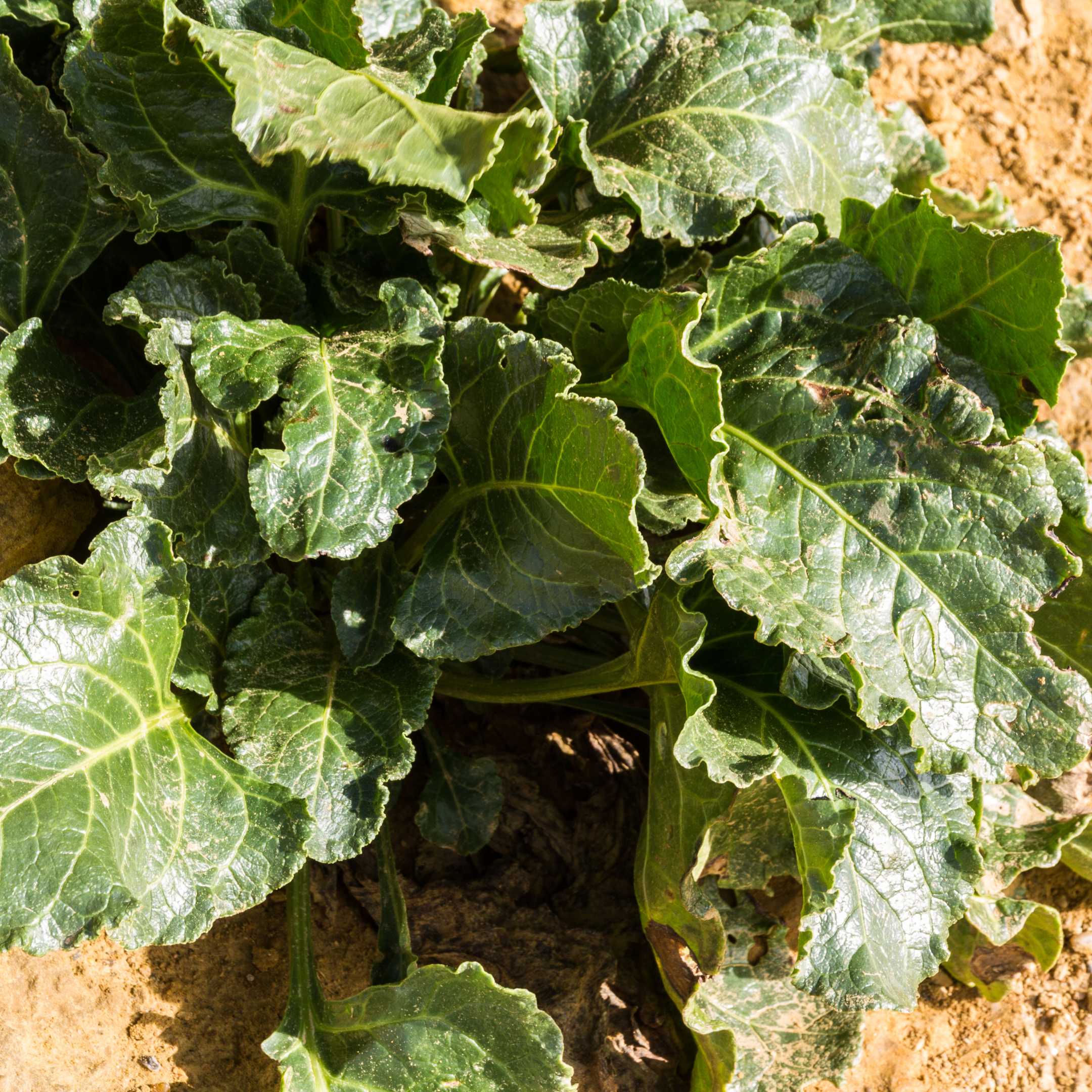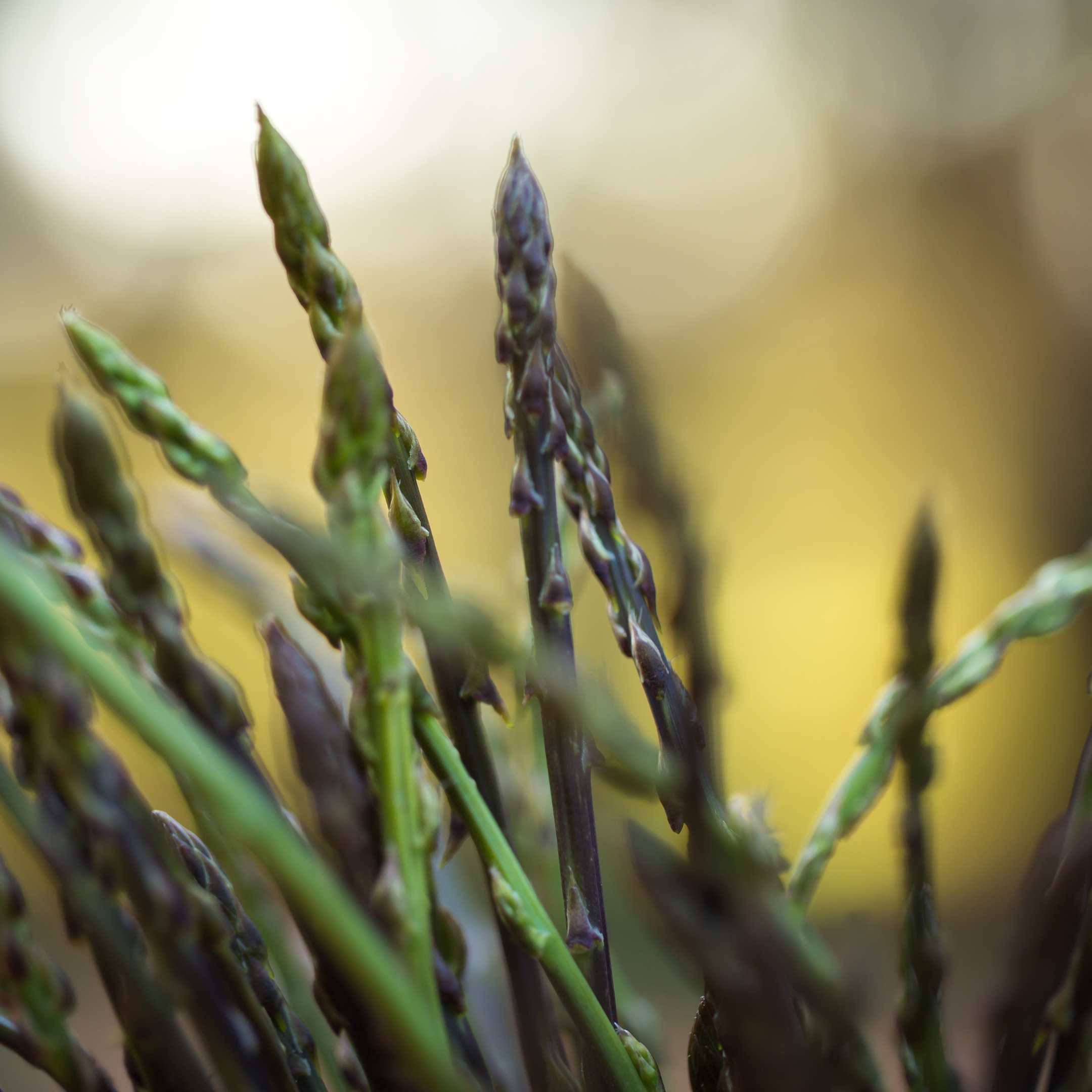Whilst Enjoying A Winter Walk Around Gozo Look Out For Flowering Alexanders And Learn How To Use This Wild Plant To Boost Your Health.
With more than 300 days of sunshine each year, Gozo is an ideal destination for winter walking holidays. The temperatures are mild throughout December to March and the rolling terraced hilltops turn a stunningly vivid green.
To accompany your rambling routes Heléna Szöllősy, the author of, Weeds For Health On Gozo, shares everything you need to know about the wild plants that make up Gozo’s unique and diverse flora. Click here for the full series and enjoy learning about the healing benefits and many usages of the yellow beauty Alexanders which blooms on Gozo from February to April.
Smyrnium olusatrum – L
Botanical Name: Smyrnium olusatrum – L. Synonyms: None Family Name: Apiaceae Maltese Name: Karfus il-ħmir Common Names: Alick, Alisanders, Black Lovage, Hell Root, Horse Parsley, Macedonian Parsley, Megweed, Skit, Wild Celery Meaning of the Name: Smyrnium, from Greek, myrrh, from smell. The plant, and especially the leaves have a smell and flavour similar to myrrh, olusatrum, from Latin, olus, potherb or vegetable, atrum, gloomy black, because of its seeds being notably large and utterly black.
DESCRIPTION
Alexanders is a biennial growing to 1.2 m. The plants are stout, with a solid stem that becomes hollow with age. The leaves are large, doubly, and triply divided, bluntly toothed, the segments ternately divided the segments flat, not fleshy. The flowers are yellow-green in colour and produced in numerous close, rounded umbels without involucres.
On Gozo, it flowers from February to April. The fruit is formed of two nearly globular halves, with prominent ridges. When ripe it is almost black. The whole herb is of a yellowish-green tint.
- Habitats: Hedges and waste places, often near the sea.
- Range: Europe to Asia. Native to the Mediterranean but is able to thrive farther north.
- Status for Malta: Indigenous. Originating from Maltese islands. Common in the wild.
- Parts Used: flowers, leaves, root, sterns.
- Herbal Actions: Antispasmodic, Analgesic, Aphrodisiac, Antiseptic, Bitter, Carminative, Deodorant, Diaphoretic, Digestive, Lipolytic (fat and weight loss action), Stimulant, Stomachic.
- Main Active Constituents: angelic acid, bitter extractive, fructose, glucose, minerals (iron, magnesium, potassium, zinc), resin, riboflavin, sucrose, thiamine, vitamin B12, volatile oil (β-phellandrene, β-caryophyllene, curzerene, furanodiene, germacrene B, isofuranodiene, myrcene)
INTERNAL USES:
- The whole plant is bitter and digestive.
- It has been used in the past in the treatment of asthma, menstrual problems, and wounds, but is generally considered to be obsolete as a medicinal plant.
- The root is a diuretic.
- The seeds were often soaked in wine to create a tonic for scurvy when other sources of vitamin C were not available and also to promote menstruation.
- The essential oils showed cytotoxic effects on tested human tumour cell lines, related to the furanosesquiterpenoid content (colon carcinoma, glioblastoma, and breast adenocarcinoma cells) Isofuranodiene and 1β-acetoxyfuranoeudesm-4-ene resulted the most active constituents.
- The essential oils possessed also radical scavenging activity.
EXTERNAL USES:
- Externally it is used as a medicinal gargle for sore throat and as a medicinal poultice for broken bones, swellings, itching and rheumatism.
- The crushed leaves or their juice have a soothing and healing treatment for cuts and minor abrasions.
EDIBLE USES:
- The plant comes into growth in the autumn and the leaves are often available throughout the winter. The whole plant has a strong warm celery-like taste and can be eaten either raw, as a salad among other herbs, or boiled.
- Flower buds – raw, steamed, or pickled. They can be added to salads and go well with fish or with a strong, hard cheese. The flower buds can also be steamed and eaten in place of broccoli. The unopened flower buds can be pickled and when this is done, they look like mini cauliflowers.
- Leaves and young shoots – raw in salads or cooked in soups, stews accompanying meat and fish. They have a rather strong celery-like flavour and are often blanched (by excluding light from the growing plant) before use. Leafy seedlings can be used as a parsley substitute.
- Root – cooked. Boiled and used in soups, its flavour is somewhat like celery. The root is said to be more tender if it has been kept in a cool place all winter.
- Seed – the spicy seeds are used as a pepper substitute. Seeds can be used to add flavour to stocks, stews, soups and to flavour rice.
- Stem – raw or cooked. It tastes somewhat like celery but is more pungent. The stem is often blanched (by excluding light from the growing plant) before use.
Steamed Alexanders.
ingredients
- 200g prepared alexanders stems or shoots (i.e., from around 8-10 stems)
- Knob of butter
- Sea salt and freshly ground black pepper
preparation
- With a small, sharp knife, peel away the outer membrane and stringy fibres from the alexanders’ stems. Trim the ends, then cut the stems into 10-12cm lengths.
- Put in a steaming basket or sieve suspended over a pan of boiling water, cover and cook for 5 to 10 minutes, until they are tender and can be pierced with the tip of a sharp knife.
- Once cooked, toss gently with a large knob of butter, a little salt and lots of pepper and serve.
Author : Heléna Szöllősy. Editor: GITH

Helena is an expert on the medicinal properties of plants having trained in Herbal Medicine and Naturopathy, specialising in Phytotherapy including Homeopathy, Aromatherapy, Apitherapy and Bach Flower Therapy.
Information on the traditional uses and properties of herbs are provided in this book for educational purposes only and is not intended as medical advice. This information is not intended to be used to diagnose, prescribe or replace professional medical care. If you have any serious health concerns, you should always check with your health care practitioner before self-administering herbs. Please also undertake your own research when foraging. Some wild plants are endangered and are protected by law.
Want to learn what else you can forage on Gozo? Click here.







